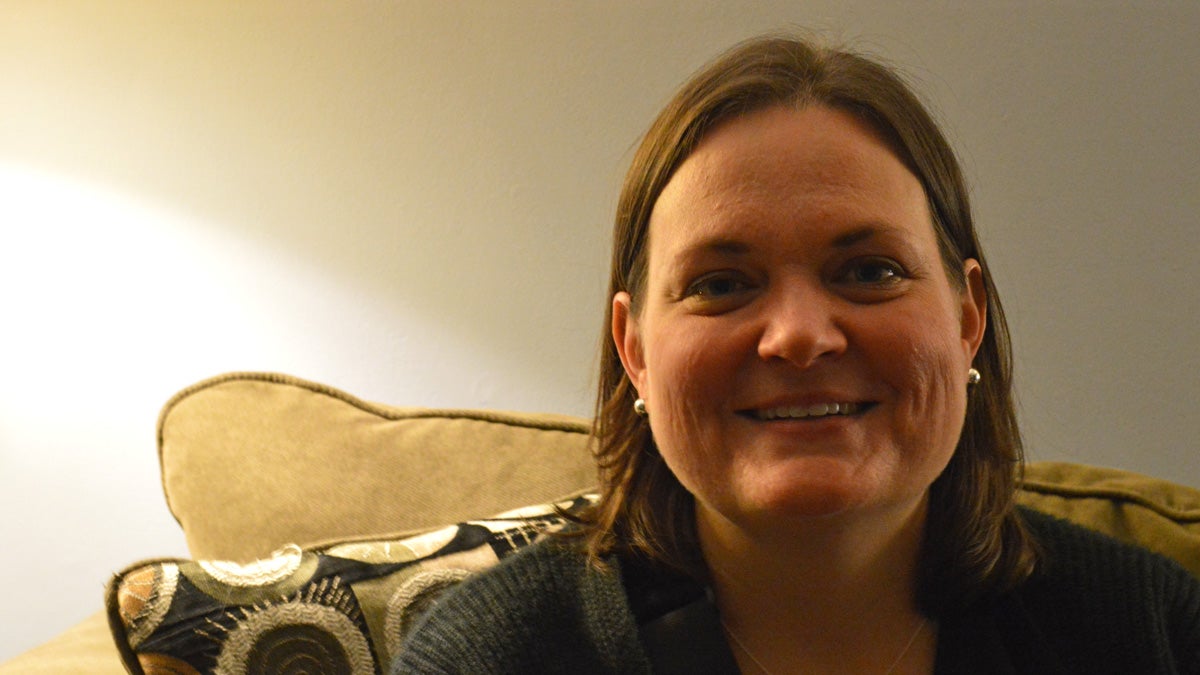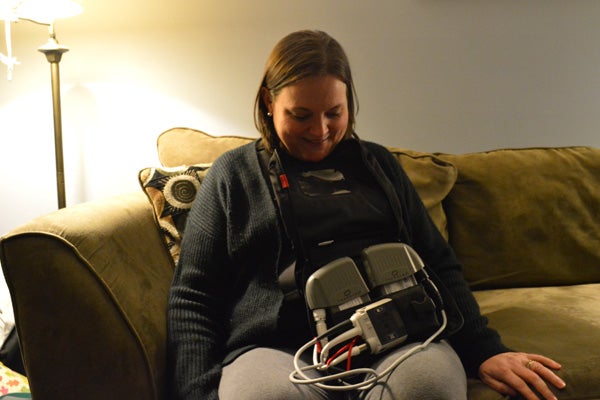Continuing to smile, despite a failing heart
Listen
Even though Linda Jara's heart is failing
Linda Jara went to the doctor in December of last year for a simple sinus infection. By Christmas, she was in heart failure.
Walking into Linda Jara’s house, she’s all smiles and apologies. She’s sorry the house is dirty — she can’t dust or vacuum because a shock could damage the machine she wears on her hip to power her heart. It’s called an LVAD, or left ventricular assist device, and it pumps her blood for her, 24 hours a day. She can’t live without it. And she’s only 43 years old.
It all started in early December of last year. Linda went to the doctor for a sinus infection. She was prescribed antibiotics, but in the following weeks, she felt even worse.
When she went back to the doctor around Christmastime, her doctor gave her some startling news — Linda’s heart was failing her. She was admitted to the hospital in what would be the first of four hospital visits over the next few months.
On February 27, she was listed for a heart transplant. On March 3, she had open heart surgery to hook up the LVAD to her heart. Because of the machine, she doesn’t have a pulse anymore — just an electrical humming noise inside her chest.

Linda Jara in her home with her left ventricular assist device, or LVAD. She has it on her at all times, even in the shower. (Paige Pfleger/WHYY)
“There’s a guy at work who likes to make a joke that anyone can come in his room as long as they have a pulse,” Linda says, laughing. She works as a high school teacher. “I just said, ‘Well I’ll just wait outside!'”
When she got out of the hospital after her surgery, she moved in with her sister. She attended a support group at Temple University and was the youngest person by nearly 40 years. They suggested she get a shower chair so she wouldn’t fall, which she found laughable at her age.
It’s been about a year now, and Linda is living with her LVAD. She took herself off the transplant list for a while because she wasn’t sleeping, she was constantly just waiting for the phone to ring.
“A call could come in any time,” she says. “The phone becomes a part of you and you can never leave it down. It’s a lot to almost be on call, 24 hours a day.”
Plus, she explains, even if she got a heart transplant, hearts are usually only good for about ten years. Then she’d have to get back onto the transplant list, then go back under the knife. Her goal is to keep her heart.
For now, her priority is to stay healthy. She walks three to five miles every morning before she goes to work as an 11th grade teacher. By the time she gets home, she’s exhausted, but happy.
In a few weeks, she’ll undergo a test where they put a catheter in her neck, and wire cameras into the chamber of her heart to see how it deals with stress. They’ll turn the LVAD down to test how her heart sustains itself without the device, and based on those results, she’ll figure out what the next step is.
“It’s scary. Everything that’s happening has been scary,” she says. “But, I don’t know, good has to come out of it.”
Updated 2/9/17 at 11:00 a.m.
Linda Jara got the call that she was up for a heart transplant on September 21, 2016.
“At that time, all of your emotions crash together. You’re happy, you’re sad, you’re worried and you’re excited. And I got to spend those few moments with 11th grade boys. Very empathetic,” Jara says with a laugh.
The surgery went well, and now Jara and her new heart are in cardio rehabilitation.
“I do a great 1.2 miles per hour, but I’m getting there!” Jara says. “Every day it gets better.”
WHYY is your source for fact-based, in-depth journalism and information. As a nonprofit organization, we rely on financial support from readers like you. Please give today.



